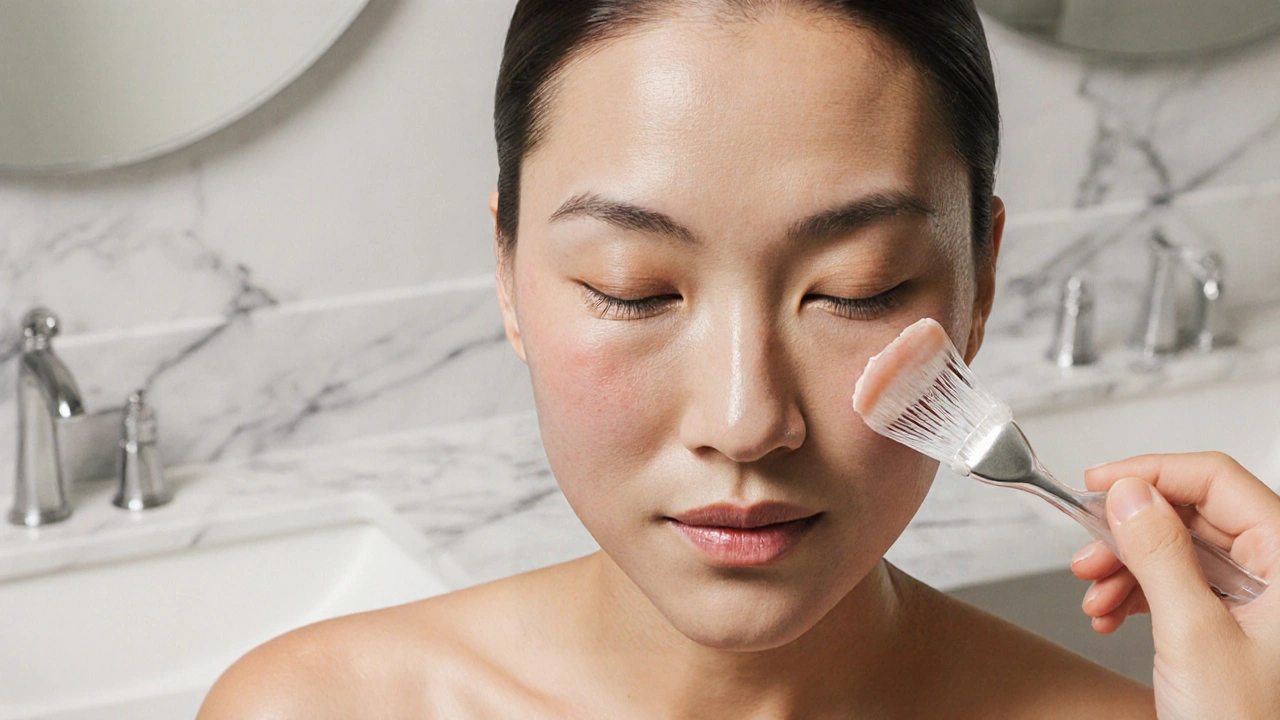Explore how chemical peels reduce wrinkles, boost collagen, and rejuvenate skin, with tips on types, safety, and after‑care.
Read MoreWrinkle Treatment: Top Strategies and How They Work
When it comes to wrinkle treatment, any method aimed at smoothing fine lines and restoring a youthful skin surface. Also known as anti‑aging therapy, it blends science and cosmetics to tackle visible aging. One of the most talked‑about ingredients is Retinol, a vitamin A derivative that speeds up cell turnover and boosts collagen, which many users cite as a daily staple. Another cornerstone is Botox, an injectable form of botulinum toxin that temporarily relaxes facial muscles. Both are backed by clinical data and real‑world results, making them go‑to choices for many seeking smoother skin.
Beyond topical or injectable routes, technology‑driven procedures have reshaped the field. Laser resurfacing, a precise light‑based treatment that removes damaged layers and stimulates new tissue growth works by creating controlled micro‑injuries, prompting the body to repair itself with tighter, more even skin. Meanwhile, chemical peels, solutions containing acids that dissolve the outer skin cells to reveal fresher layers underneath vary in strength from gentle to deep, allowing users to pick a level that matches their tolerance and goals. Together, these options form a toolbox where each tool addresses a specific wrinkle‑type or skin‑concern.
Choosing the right approach depends on three key factors: the depth of the lines, the area you want to treat, and how quickly you need results. Superficial fine lines often respond well to retinol or mild chemical peels, which you can integrate into a daily routine with minimal downtime. Deeper dynamic wrinkles—those that appear when you smile or frown—usually benefit from Botox because it directly targets muscle movement. For texture issues, larger pores, or sun‑damaged patches, laser resurfacing offers a more comprehensive renovation, though it typically requires a short recovery period. Understanding these attributes helps you match the treatment to the problem rather than guessing.
What to Expect When Starting a Wrinkle Treatment Plan
First, a consultation with a dermatologist or qualified aesthetic professional is essential. They’ll assess your skin type, medical history, and aesthetic goals, then recommend a combination that fits your lifestyle. For retinol, start with a low concentration (around 0.3%) and gradually increase to avoid irritation. Botox appointments are quick—usually under 15 minutes—and you’ll notice a softened look within a week, lasting three to four months. Laser sessions may involve numbing cream, and most patients experience redness and mild swelling for a day or two before the renewed skin emerges. Chemical peels follow a similar pattern: a brief sensation during application, then a peeling phase that reveals smoother skin a few days later.
Cost and maintenance are also part of the decision matrix. Over‑the‑counter retinol products range from $10 to $30 per tube, making them the most budget‑friendly entry point. Botox charges per unit, typically adding up to $300–$600 per treatment area. Laser resurfacing and deep chemical peels sit in the higher tier, often costing several hundred dollars per session, but the longer interval between treatments can offset the upfront expense. Insurance rarely covers cosmetic procedures, so budgeting for the long term is wise.
Safety considerations should never be overlooked. Retinol can increase sun sensitivity, so daily SPF 30+ is a must. Botox requires a skilled injector; improper placement may lead to drooping eyelids or uneven results. Laser resurfacing carries a small risk of hyperpigmentation, especially in darker skin tones, so pre‑treatment testing is crucial. Chemical peels can cause temporary redness and peeling; stronger formulas demand professional supervision to minimize scarring. By understanding these risks and following post‑care guidelines, you can maximize benefits while keeping side effects low.
Finally, real‑world experiences often highlight the power of combining methods. Many patients report that using retinol nightly keeps skin primed, allowing Botox to work more efficiently, while occasional laser or peel sessions refresh the overall texture. This layered strategy creates a synergy where each treatment tackles a different wrinkle layer, delivering smoother, younger‑looking skin over time. Below you’ll find detailed articles that dive into each of these options, compare dosing, side effects, and help you decide which mix fits your routine best.
